
Key Points
- A Breakout for Internet Retail
- Small Caps Breakdown vs. Large Caps
- Growth Over Value Remains a Key Theme
- No Clear Signal on “Risk Appetite”
- More Weakness for the Lumber/Gold Ratio
Chart in Focus:
Below we highlight the continued strength in the Growth vs. Value theme. One group that appears to be a driver of that strength is the S&P 500 Internet and Catalog Retail Index. The group has broken out of a consolidation that has been in place since last September and trades above the, now rising, 50-day moving average. At the same time, there is a fresh breakout relative to the S&P 500, as the ratio appears to be shifting into a leadership position for the first time in a year. On a relative basis, the 50-day moving average is beginning to turn higher.
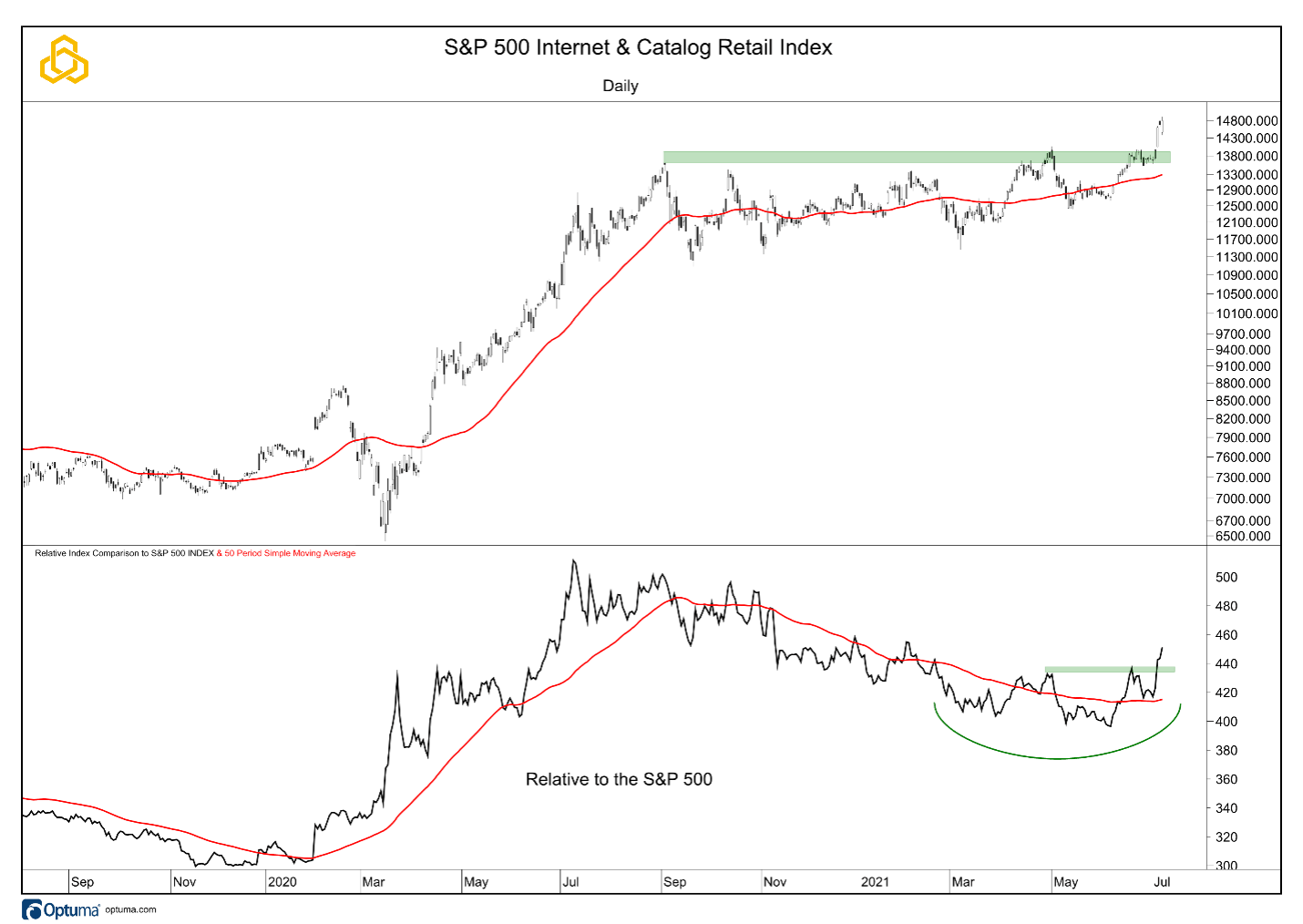
Key Themes and Relationships
We update our views on the key relationships that we track across the market to get a sense of investor’s willingness to take on risk. We also highlight the trends playing out in major factors such as Growth, Value, Large Cap, and Small Cap.
High Beta vs Low Volatility
The ratio of the S&P 500 High Beta Index relative to the S&P 500 Low Volatility Index has come under pressure over the past week, falling below the rising 50-day moving average. The ratio remains above support and the 200-day moving average, keeping it in a consolidation after the strong move from the 2020 lows. After failing to confirm at the highs, the 14-day RSI is moving toward oversold conditions.
A break of support would serve to change the structure of the larger trend from bullish to bearish.
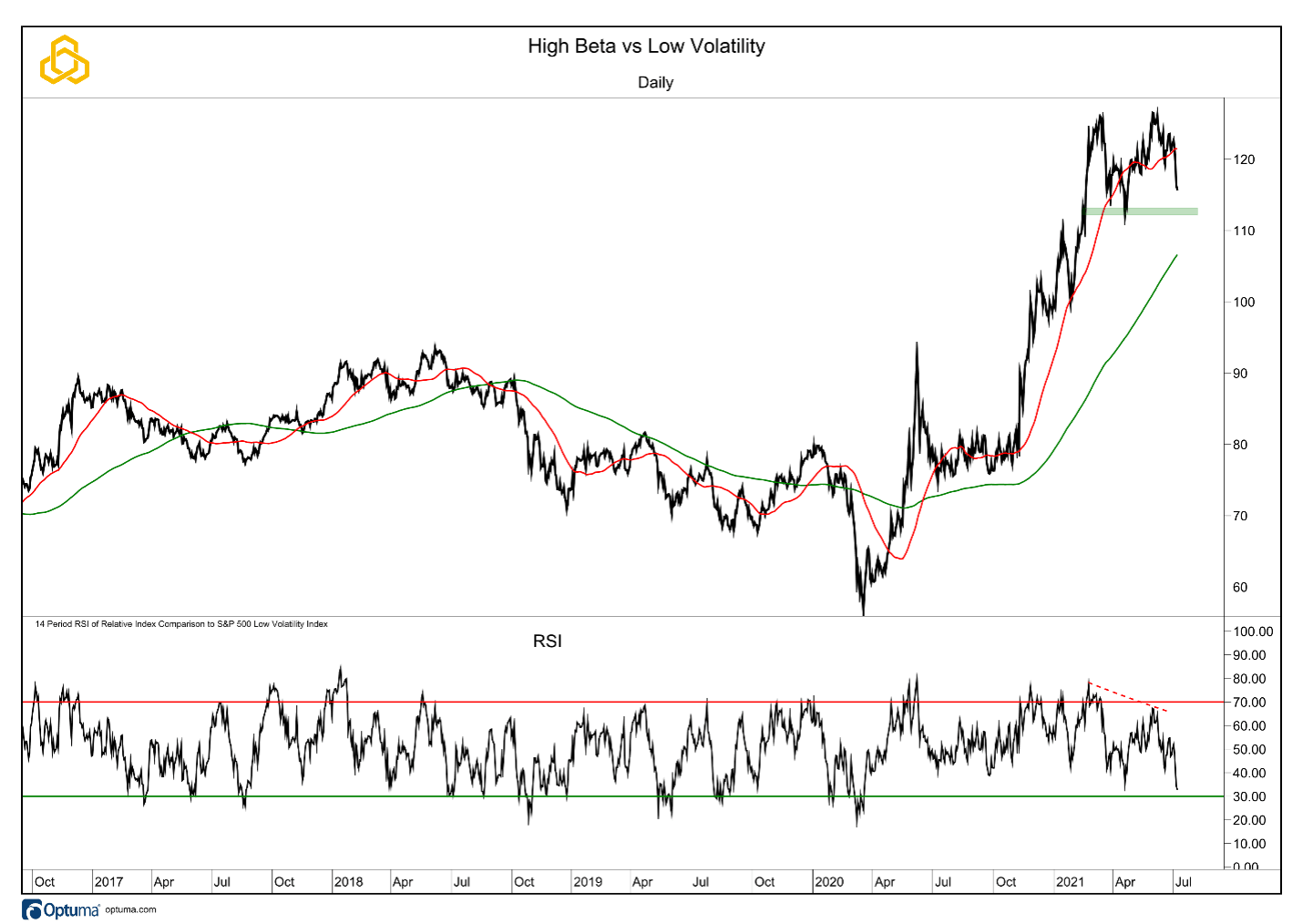
Consumer Discretionary vs Consumer Staples (Equal Weight)
The ratio of Consumer Discretionary stocks relative to Consumer Staples stocks is consolidating above support at the 2018 highs and the 50-day moving average. The 200-day moving average continues to move steadily higher and will soon add to the importance of the price-based support level. The 14-day RSI is in the middle of the range, confirming the consolidation that is playing out in the ratio.
A breakout would be a signal that investors are willing to take on more risk. A break of support would send the opposite message.
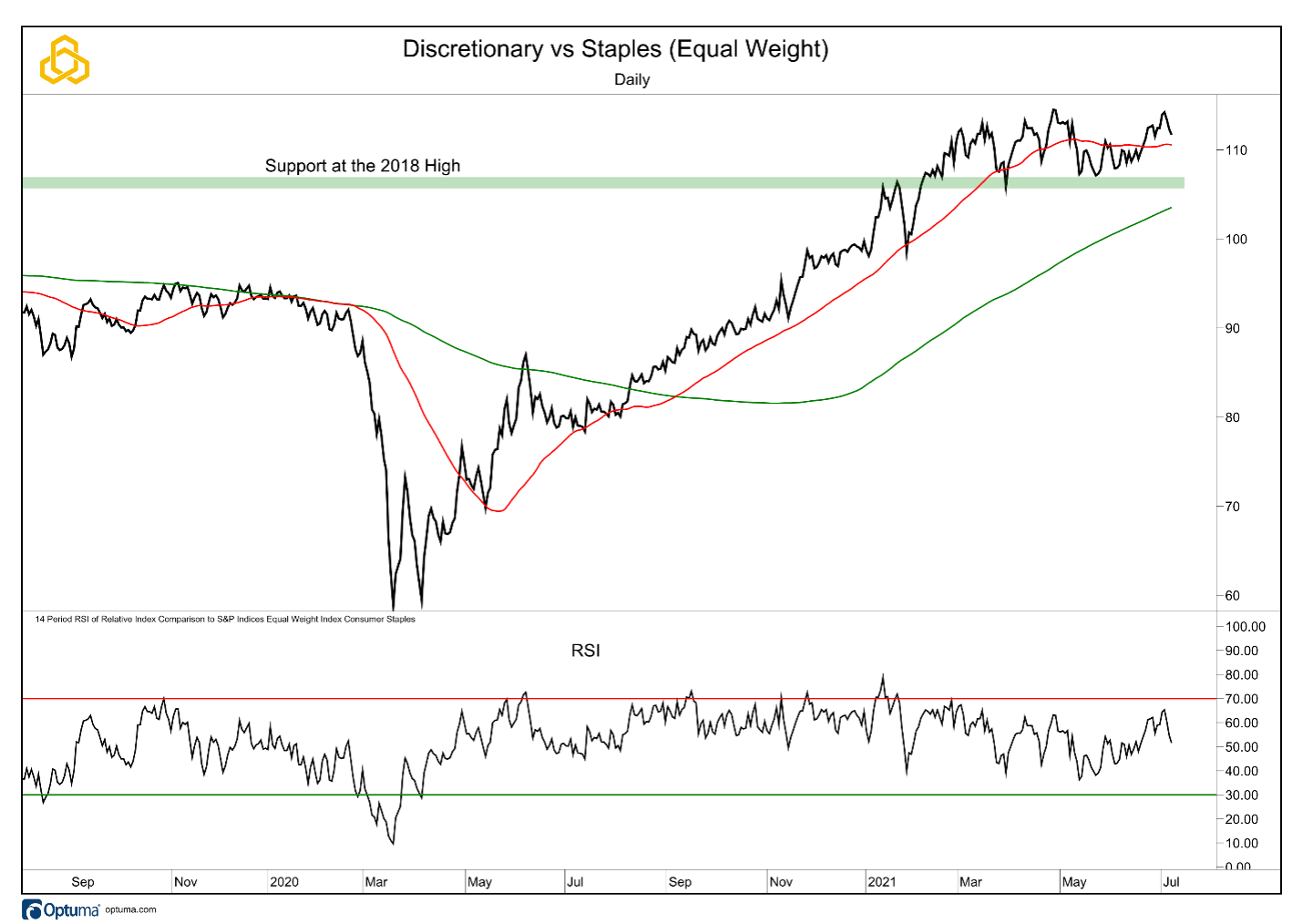
Copper vs Gold
The Copper/Gold ratio remains in a range between the support and resistance levels that we have been highlighting. As the ratio trades below the 50-day moving average, we note that the 14-day RSI has yet to reach oversold levels. A break of support would signal that the trend has turned to the downside and would bring the 200-day moving average into play.
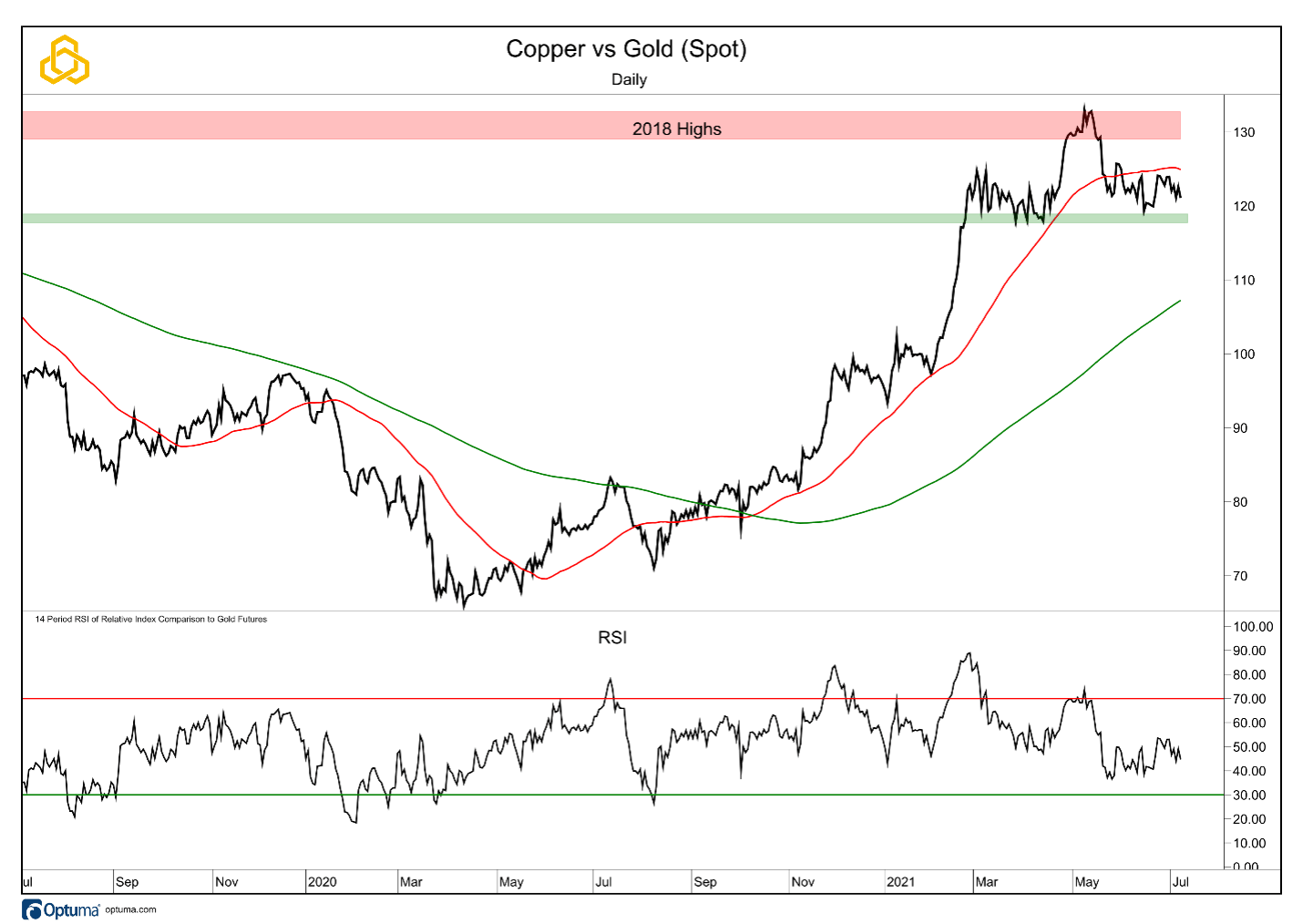
Lumber vs Gold
The Lumber/Gold ratio continues to move to the downside, further below the 200-day moving average. The 14-day RSI remains in an oversold position, highlighting the strength of the bearish trend. The moving average and the former breakout level are now likely to serve as resistance to any oversold rebound that develops.
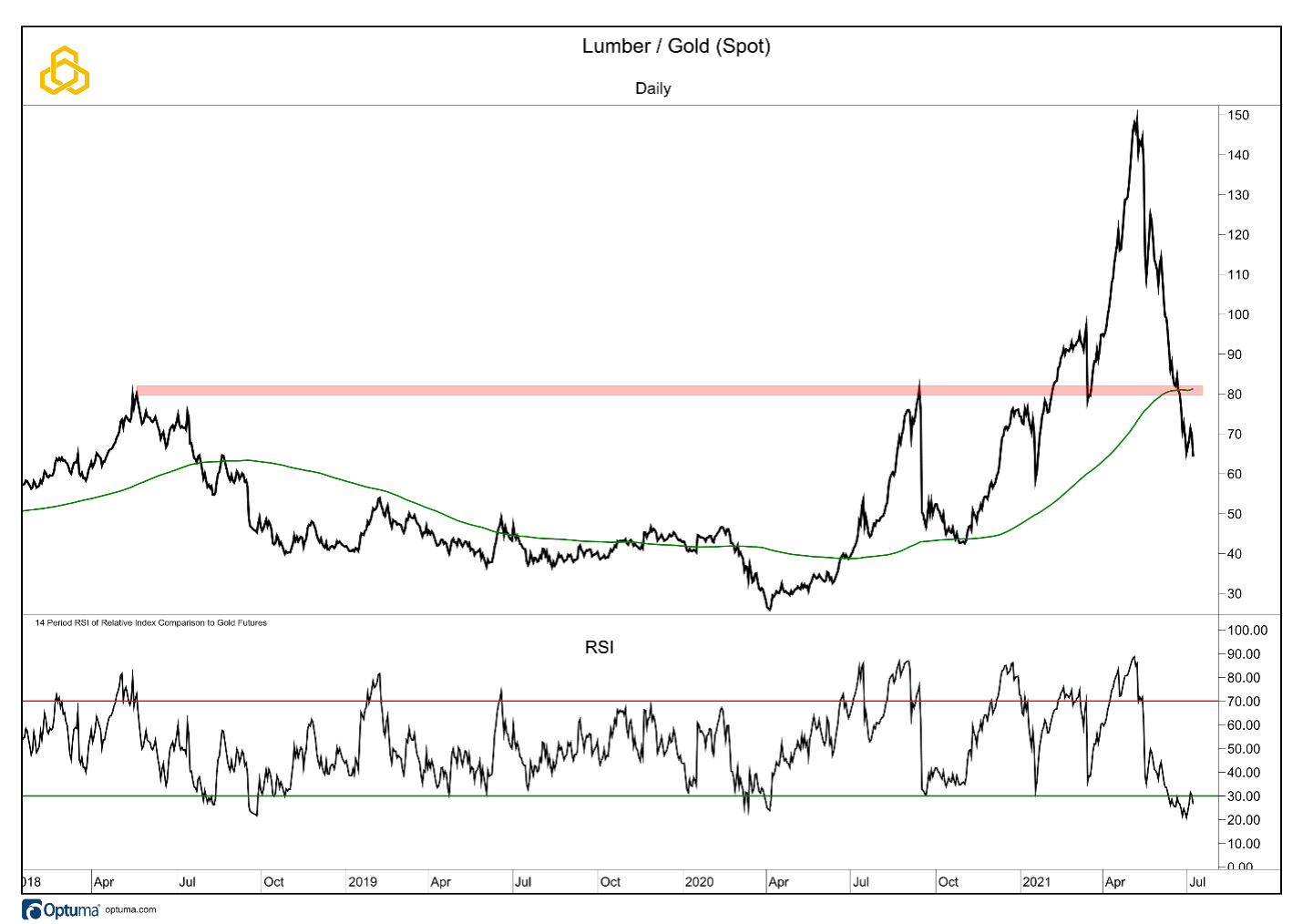
The themes below can show us where investors are allocating capital within the equity market.
Growth vs Value
The Growth/Value ratio for the S&P 500 continues to move higher, absorbing the overbought condition of the 14-day RSI. The ratio is above the 50 and 200-day moving averages, both of which are now moving higher. Near-term pullbacks in the ratio are likely to find support at the interim high set in April of this year. Above this support level, the path of least resistance is to the upside.
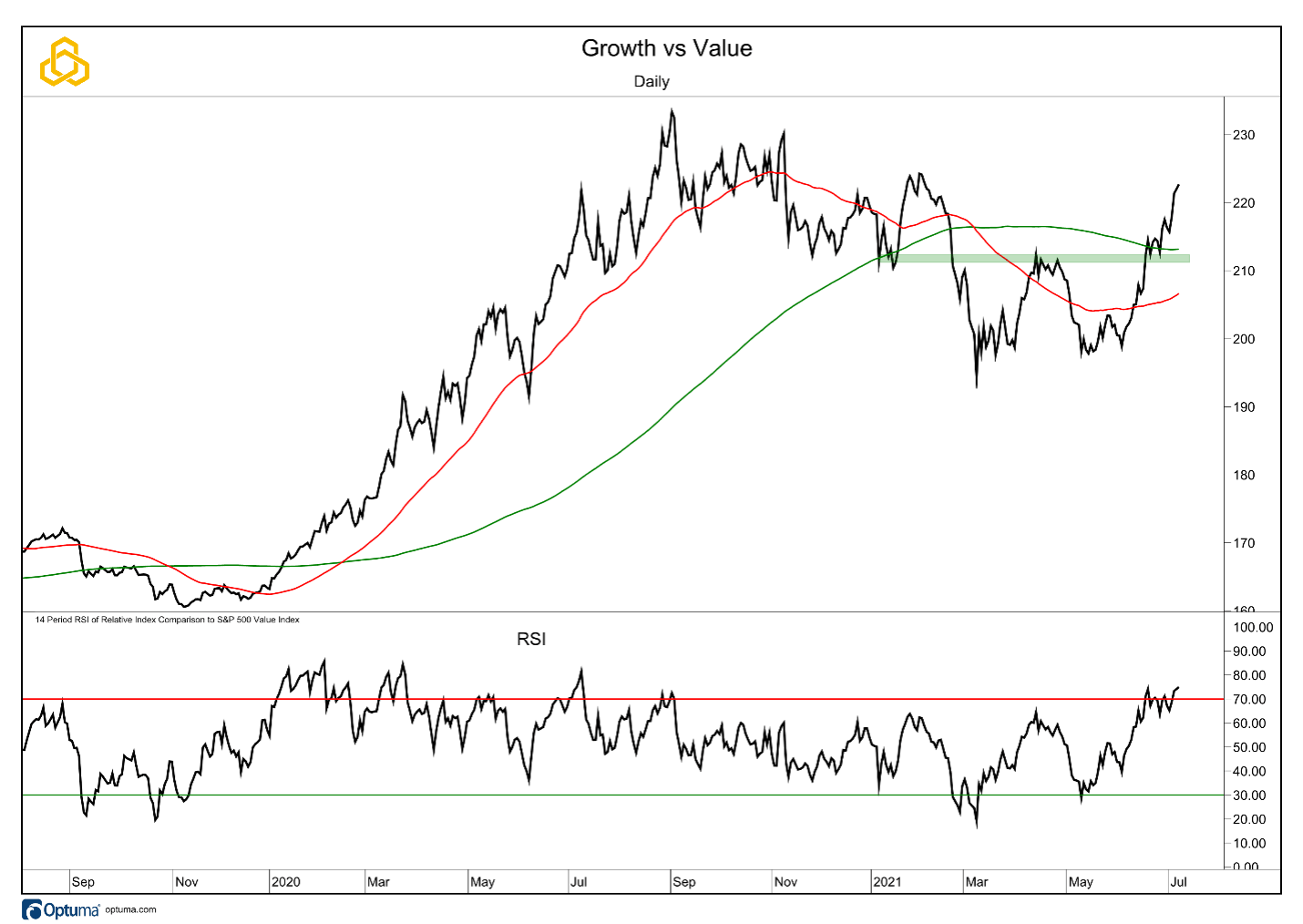
Small vs Large
The ratio of Small Caps to Large Caps has broken below the support zone that had been holding for the past few weeks. The ratio is now well below the declining 50-day moving average. As we wrote last week, a break of support has now led to a test of the rising 200-day moving average. While a near-term rebound cannot be ruled out, the former support level and the 50-day moving average are now likely to become resistance to rallies.
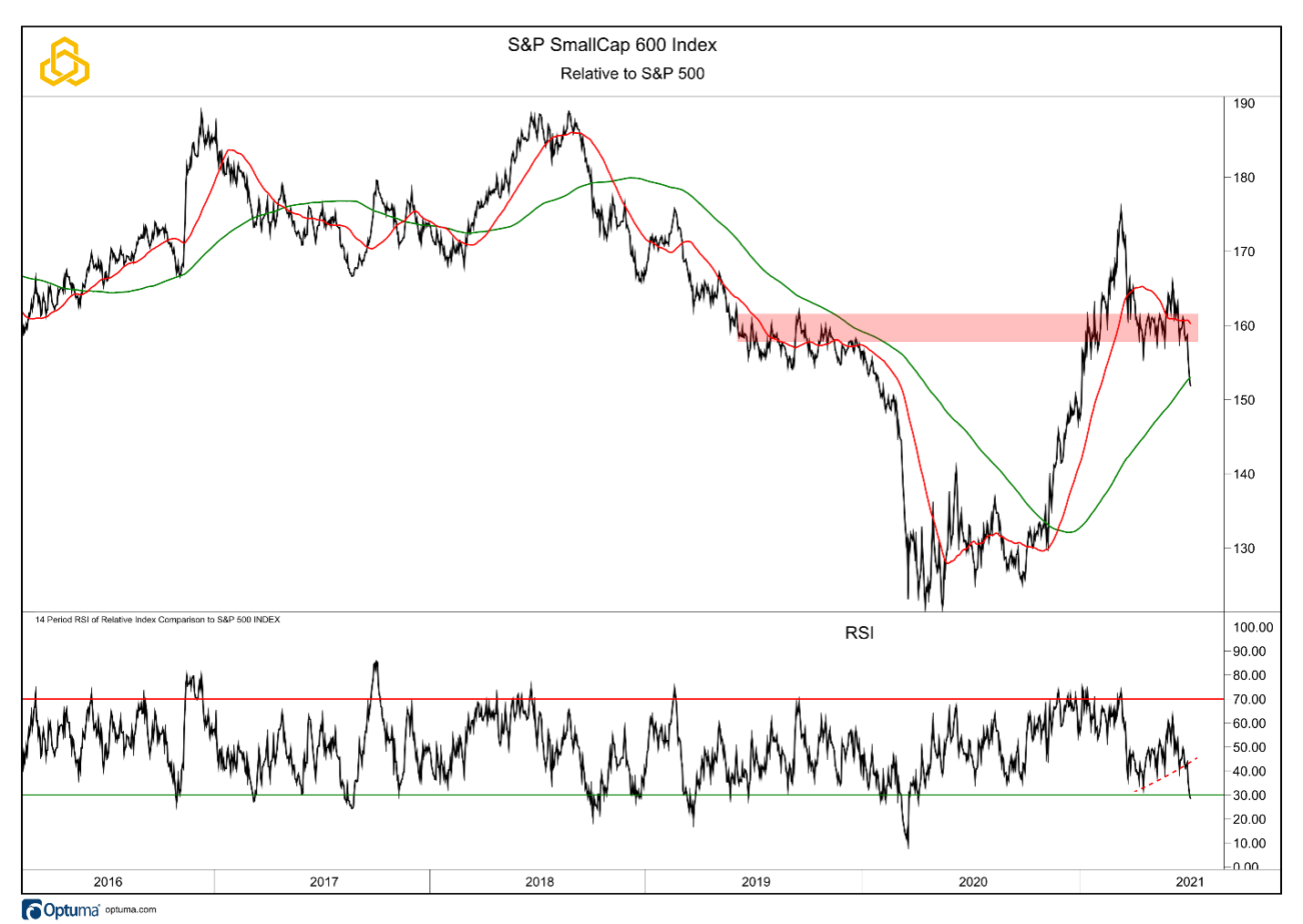
Take-Aways
When it comes to risk appetite, investors cannot seem to decide which way to lean. Commodity themes point to slowing global growth which is further supporting the outperformance of Growth stocks relative to Value stocks and Large Caps over Small Caps in the near-term.
